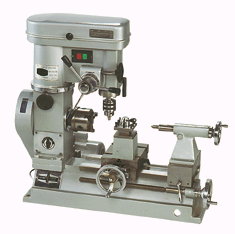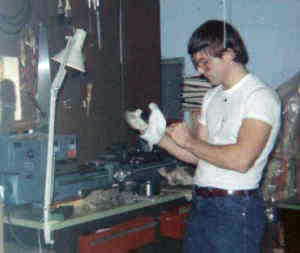Mini Lathe Versions

Note that this model uses belts and pulleys to change speeds and appears to lack power feed and thread cutting capability.
Several vendors sell multipurpose Lathe-Mill-Drill 3-in-1 machines. At first glance, these seem intriguing since the multiple machines share common parts, leading to cost efficiencies and space efficiencies since all three machines are combined.
In practice, these machines are always a compromise and less convenient than individual machines.
Here’s a short summary of why:
- Changing the setup back and forth between lathe, mill and drill is time consuming. At a minimum, you have to install and align the milling vise for milling or remove it and install the tool post for lathe work. Shop time is valuable!
- You may have a project set up on the machine in one mode or the other and then have a need to use the other mode – possibly for an unrelated project and/or something you need to make right now.
- While the lathe capabilities usually are fine, and often offer a larger swing than single-purpose lathes of similar size, they don’t have a full-size milling table and usually have less head room than a mill or drill. This can seriously limit the size of work that can be milled or drilled. In short, these machines are decent as lathes, but inconvenient and limited as mills and drills.
Even so, I have heard feedback from some owners of larger, more expensive 3-in-1 machines such as those sold by Grizzly and Smithy (see review), who are very satisfied with them.
One model that I have heard good reports on is the Shoptask, which you can see at Bill Cotton’s web site. But I would stay away from the cheap (under $800), low-end models unless you are limited by both funds and work space.
Back around 1974, I bought a high-quality Austrian 3-in-1 Emco Maximat 7 – my first lathe and mill.

The quality was fine, but I found it very frustrating to change between modes due to the set up time when switching between operations.
With separate machines you can just move the workpiece to the machine you need without having to remove the lathe toolpost, install the milling vise, etc.
Additionally, the range of table movement for milling was very limited compared to a dedicated milling machine.
